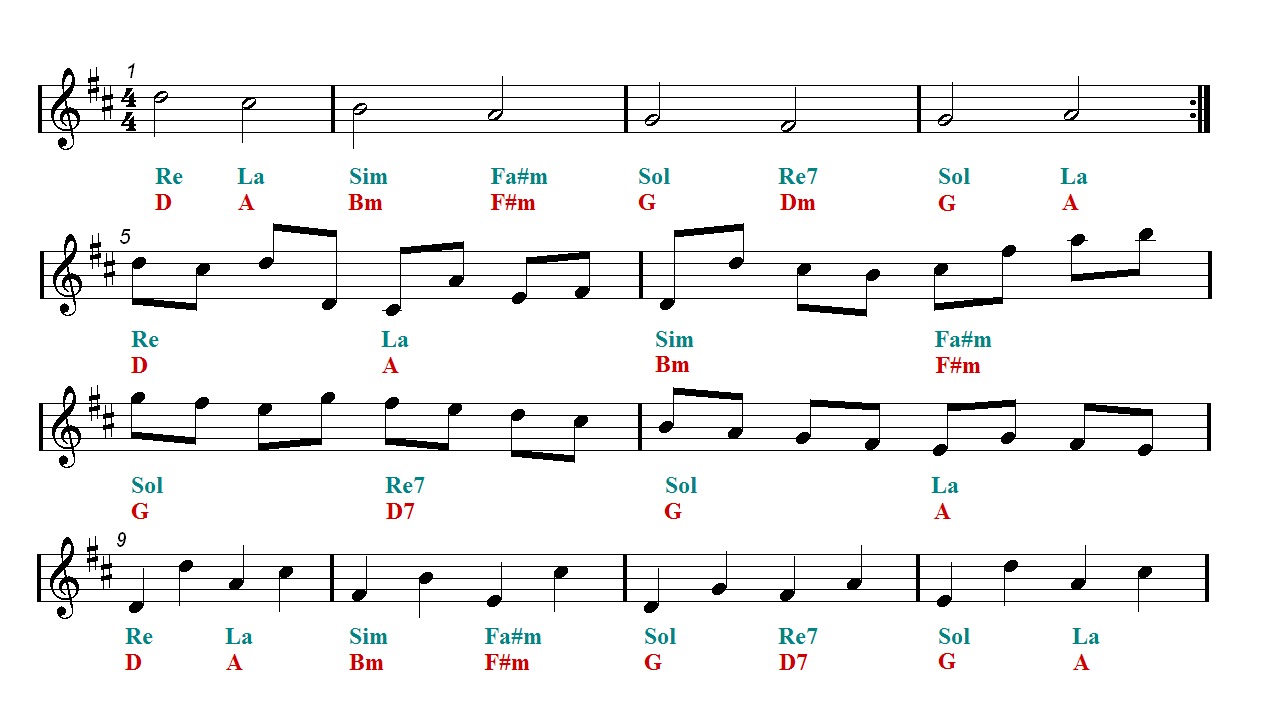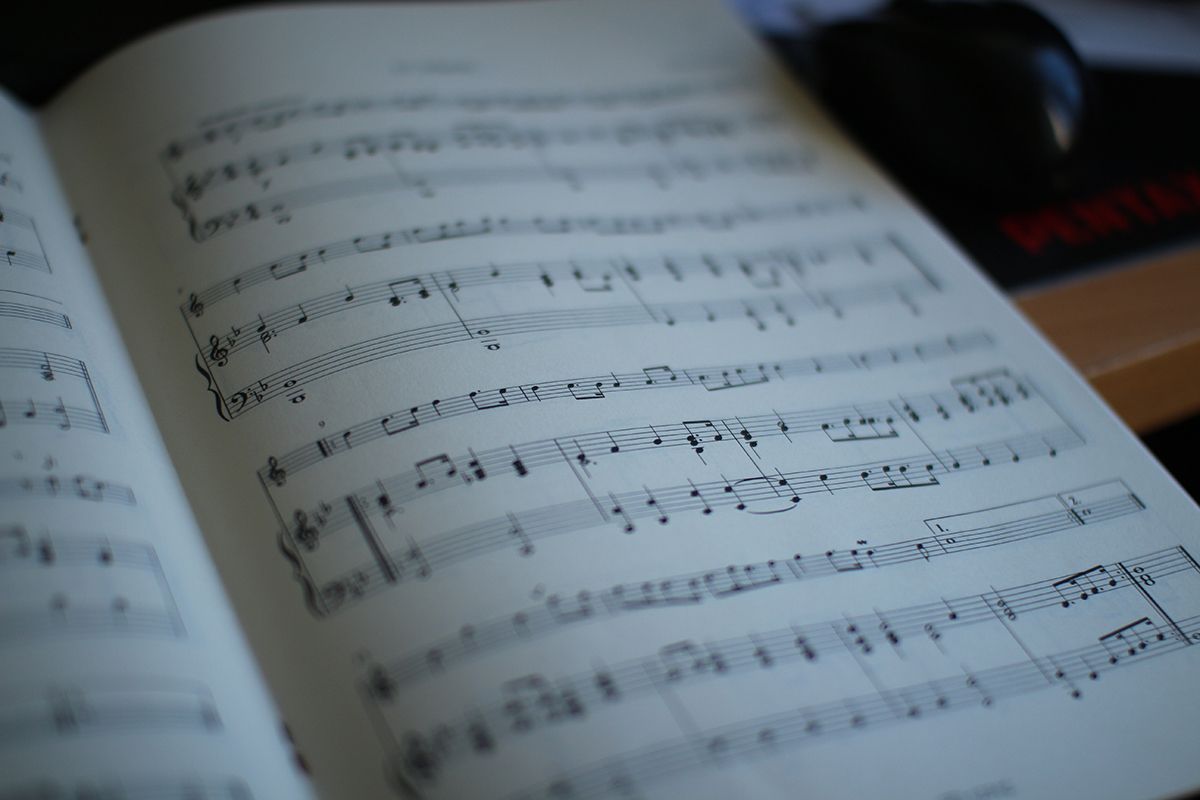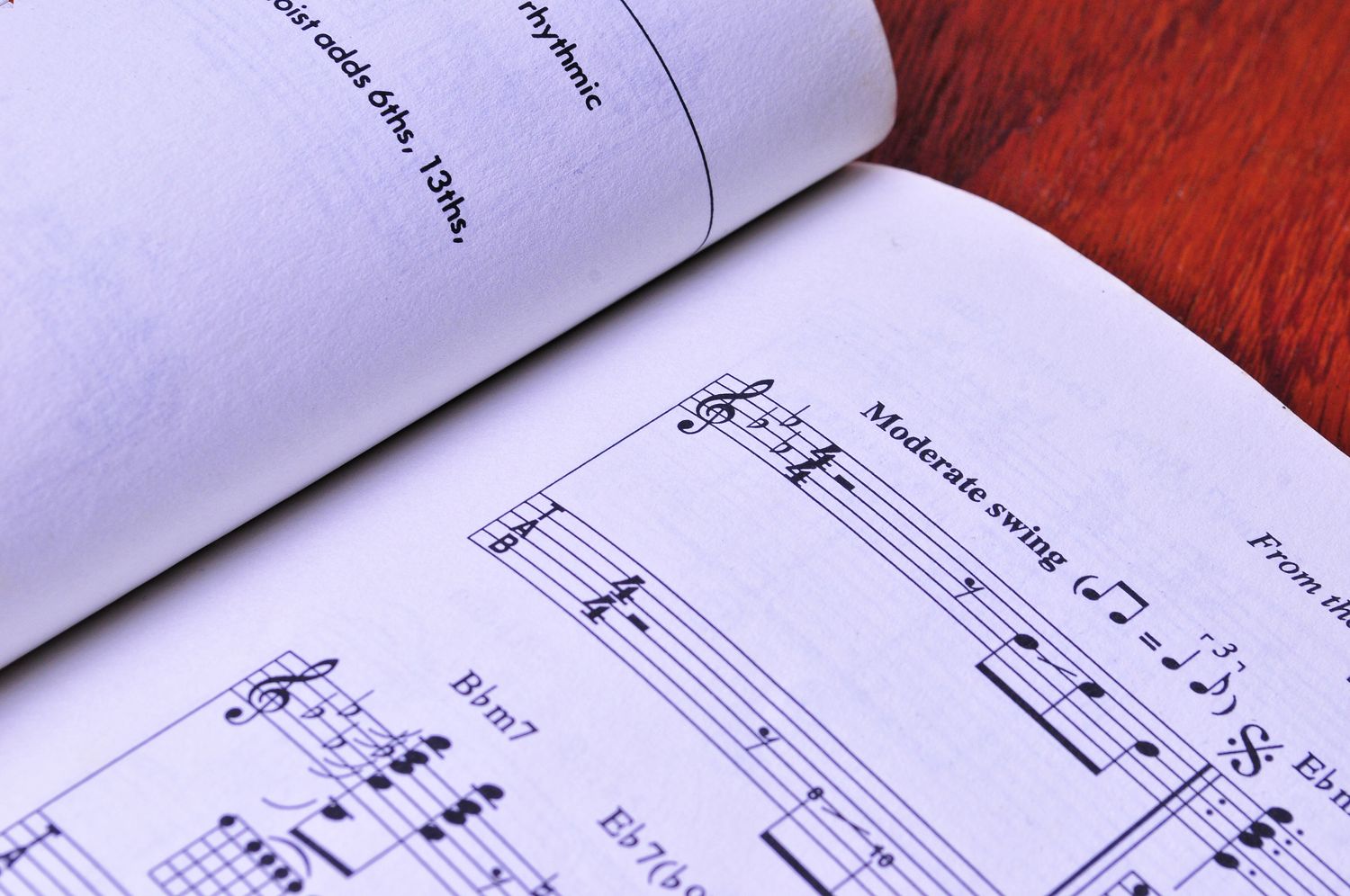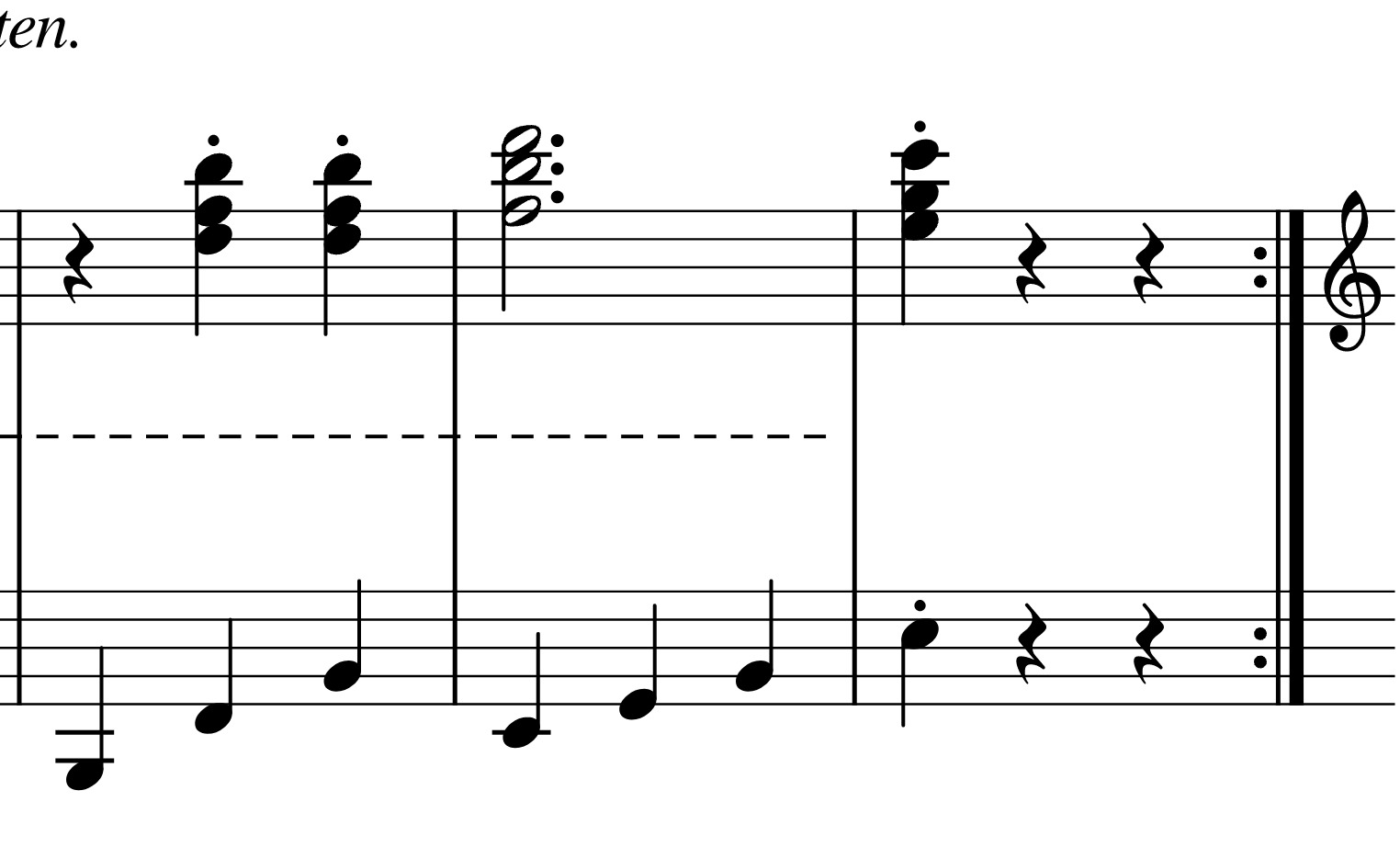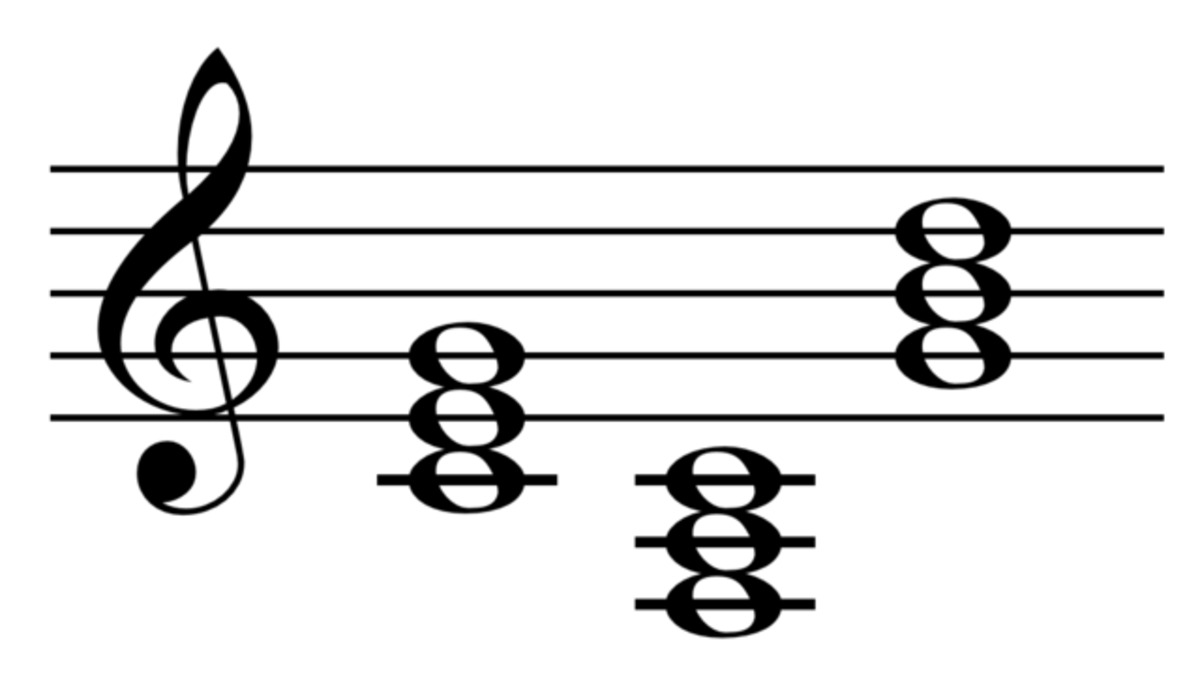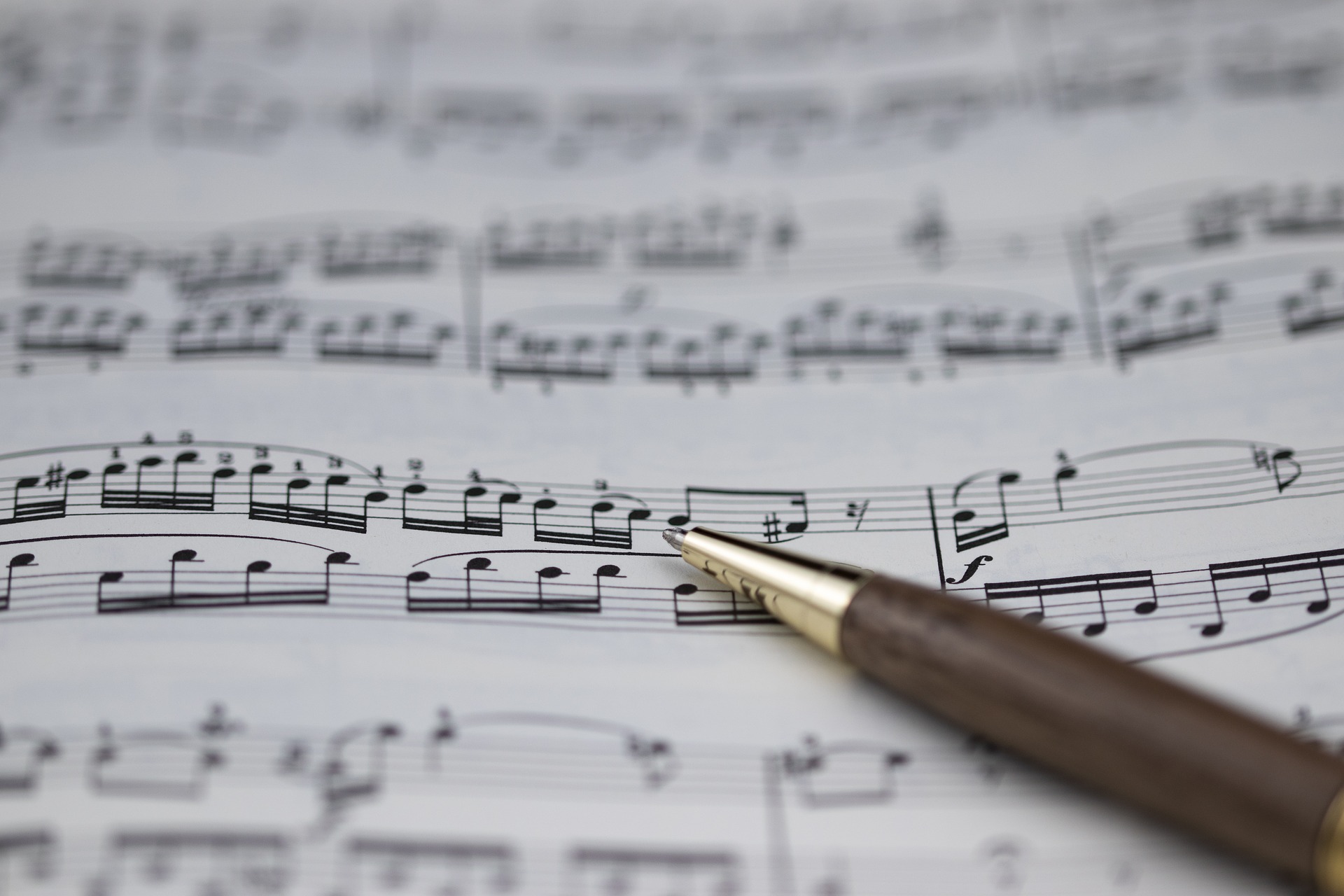Home>Production & Technology>Music Theory>What Is Figured Bass In Music Theory?


Music Theory
What Is Figured Bass In Music Theory?
Published: January 30, 2024
Discover the concept of figured bass in music theory, its role in harmonic analysis, and how to read and interpret this notation. Enhance your understanding of music theory today!
(Many of the links in this article redirect to a specific reviewed product. Your purchase of these products through affiliate links helps to generate commission for AudioLover.com, at no extra cost. Learn more)
Table of Contents
Introduction
Music theory is a fascinating field that delves into the inner workings of music and the principles that govern its composition. One important aspect of music theory is figured bass, which serves as a valuable tool for understanding and interpreting music from the Baroque period and beyond.
Figured bass, also known as thoroughbass or basso continuo, is a system of shorthand notation used to indicate harmonies and chords in a musical score. It provides a framework for improvisation and interpretation, allowing musicians to add depth and complexity to their performances. Understanding figured bass is essential for composers, performers, and music theorists as it provides insights into the harmonic structure and voice leading of a piece.
In the world of music theory, figured bass is like a secret code that unlocks the hidden treasures of a musical composition. By studying and deciphering the figures and symbols embedded within the music, musicians can bring out the intended harmony and expressiveness of the piece.
Throughout this article, we will explore the origins, notation, principles, and applications of figured bass in music. We will also delve into its historical development, modern interpretation, and usage in contemporary compositions. So, let’s dive into this captivating world of figured bass and uncover the mysteries and magic it holds.
Definition of Figured Bass
Figured bass, also known as basso continuo or thoroughbass, is a system of musical notation used in Western classical music from the Baroque period onwards. It involves the use of figures and symbols placed below or above a bass line to indicate harmonies and chords.
The term “figured bass” refers to the practice of adding numerical figures to a bass line to indicate the type of chord or harmony that should be played above it. The figures provide crucial information about the intervals and inversions of the chords, as well as any added or altered tones.
The purpose of figured bass is to provide a framework for improvisation, accompaniment, and realization of the underlying harmony. It allows musicians to fill in the harmonies and perform the music in a flexible and expressive manner, making it an integral part of the Baroque tradition.
Figured bass notation evolved as a response to the increasing complexity and sophistication of Baroque music. Composers sought to provide a basic harmonic framework while allowing performers the freedom to embellish and interpret the music according to their own taste and skill. It was particularly prevalent in keyboard and instrumental music of the time.
It’s important to note that figured bass notation is not a precise and rigid system like conventional musical notation. Rather, it serves as a guide that enables musicians to understand the implied harmonies and make informed decisions about chord voicings and voice leading.
Historical Background
The practice of figured bass emerged during the Baroque period in the late 16th and early 17th centuries. It originated in Italy and quickly gained popularity throughout Europe. The system was primarily used in keyboard and instrumental music, but also found its way into vocal compositions, such as operas and oratorios.
During the Baroque era, composers like Johann Sebastian Bach, George Frideric Handel, and Domenico Scarlatti heavily utilized figured bass in their works. It became an integral part of the basso continuo style, which involved a bass line played by a bass instrument (such as a cello or bassoon) and harmonized by chordal instruments (such as a harpsichord or lute). The figured bass symbols provided the essential information needed for the harmonization.
The use of figured bass notation allowed composers and performers to achieve a rich and elaborate musical texture. It provided a foundation for improvisation, ornamentation, and expressive interpretation, giving musicians the freedom to add their own embellishments and variations to the music.
Figured bass notation also played a critical role in the development of Western tonal harmony. It helped codify the understanding of chord progressions, inversions, and voice leading. The figures indicated the intervals and alterations to be played, which enabled musicians to create harmonically rich and varied interpretations.
As the Classical period approached in the late 18th century, the practice of figured bass gradually declined. Composers began to write more detailed and specific instructions in their scores, leaving less room for interpretation. The focus shifted towards notating every individual part, eliminating the need for improvisation and the use of figured bass symbols.
Despite its decline, figured bass notation continues to be studied and appreciated today as a historical and pedagogical tool. It offers valuable insights into the harmonic language and improvisational practices of the Baroque era, and serves as a foundation for understanding later music theory concepts.
Notation and Symbols Used
To understand figured bass, it is essential to familiarize oneself with the notation and symbols used in this system. The figures and symbols provide valuable information about the chords and harmonies implied in the music.
In figured bass notation, the figures are placed below or above a bass note, representing the intervals above the bass that form the chord. The figures indicate the type of chord to be played and any alterations or added tones.
Here are some commonly used symbols and their meanings:
Inversion Numbers:
- 5: Indicates a triad in root position
- 6: Indicates a triad in first inversion
- 6/4: Indicates a triad in second inversion
Chord Types:
- 7: Indicates a dominant seventh chord
- 9: Indicates a dominant ninth chord
- ø: Indicates a half-diminished (minor seventh flat five) chord
- + : Indicates an augmented chord
Additional Symbols:
- # : Indicates a raised pitch
- b : Indicates a lowered pitch
- 7/5 or 5/3 : Indicates a chord with added tones (such as seventh and fifth added to a triad)
It’s important to note that figured bass notation is not standardized, and there may be variations in the symbols used by different composers and music theorists. However, the general principles and conventions remain consistent.
When reading and interpreting figured bass notations, it is crucial to consider the key signature and the context of the surrounding harmonies. The figures provide a framework, but the performer’s knowledge and understanding of harmonic progressions and voice leading are essential for an accurate and expressive interpretation of the music.
By mastering the notation and symbols used in figured bass, musicians can unlock the harmonic complexities and hidden nuances of the music, bringing it to life in a captivating and authentic manner.
Basic Principles of Figured Bass
Figured bass operates on several fundamental principles that guide its interpretation and application. Understanding these principles is essential for musicians to effectively utilize the system in their performances and compositions.
1. Harmonic Analysis: Figured bass notation requires an understanding of the underlying harmony of a piece. By analyzing the bass line and the accompanying figures, musicians can identify the implied chords and their inversions. This analysis is crucial for making informed decisions when harmonizing and realizing the music.
2. Voice Leading: Figured bass notation gives insights into the voice leading or the movement of individual voices within a chord progression. Musicians must pay attention to the intervals indicated by the figures to ensure smooth and logical progressions between chords. Attention to good voice leading creates a cohesive and pleasing musical experience.
3. Realization: Figured bass provides a framework for improvisation and realization. Performers have the freedom to choose the specific voicings and melodic lines within the given harmonic structure. The figures suggest the possible chord extensions, suspensions, and embellishments that can be added to create a richer and more expressive performance.
4. Modulation: Figured bass notation is particularly useful when navigating through key modulations. The figures assist in understanding the harmonic function and relationships between chords in different keys. By carefully analyzing the figured bass symbols, musicians can smoothly transition between keys and maintain the harmonic continuity of the piece.
5. Contextual Interpretation: Figured bass should be interpreted in the larger context of the musical composition. Musicians must consider the style, genre, and historical background of the music to make informed decisions regarding tempos, dynamics, ornamentation, and other expressive elements. This contextual interpretation brings depth and authenticity to the performance.
6. Improvisation: Figured bass notation provides a foundation for improvisation, allowing performers to add their own embellishments and variations. Musicians can use their understanding of figured bass to create melodic lines and harmonic progressions that complement the style and character of the music. This improvisation adds a personal touch and creativity to the performance.
By following these principles, musicians can effectively utilize figured bass notation to create rich harmonies, expressive performances, and faithful interpretations of the music. Figured bass provides a flexible and versatile tool that allows for artistic expression and a deeper understanding of the composer’s intentions.
Harmonic Implications
Figured bass notation provides valuable insights into the harmonic implications of a musical composition. By analyzing the figures and symbols, musicians can understand the implied chords and harmonies, as well as the voice leading and harmonic progressions within the piece.
1. Chord Quality and Inversions: The figures in figured bass notation indicate the quality of the chords, such as major, minor, dominant, or diminished. Additionally, it indicates the inversion of the chord, whether it is in root position, first inversion, or second inversion. These details help musicians accurately realize and interpret the intended harmonies of the music.
2. Altered and Added Tones: Figured bass notation often includes symbols to indicate altered or added tones within a chord. These symbols provide information about raised or lowered pitches, chromatic alterations, and chord extensions. By understanding these symbols, musicians can accurately perform the intended harmonic nuances and create a more expressive rendition of the music.
3. Voice Leading: Figured bass notation aids in understanding the voice leading within a piece. It indicates the intervals between the bass note and the other voices, helping performers navigate the melodic movement and ensure smooth progressions. By paying attention to the figures, musicians can create seamless transitions between chords and maintain the desired harmonic flow of the composition.
4. Modulation and Key Relationships: Figured bass is particularly useful when analyzing modulations and key changes within a piece. The figures provide insights into the harmonic relationships between chords in different keys, helping performers navigate these transitions and maintain continuity. Understanding the harmonic implications allows musicians to emphasize the tonal changes and add depth to their interpretations.
5. Functional Harmony: Figured bass notation also assists in understanding the functional harmony of a composition. By analyzing the figures and their corresponding chords, musicians can identify the tonic, dominant, and subdominant functions within a piece. This knowledge enables them to highlight the structural and harmonic significance of these chords in their performances.
By considering these harmonic implications provided by figured bass notation, musicians can gain a deeper understanding of the underlying harmonic structure of a musical composition. This understanding allows for more informed interpretations, expressive performances, and a closer alignment with the composer’s intentions.
Application in Composition and Performance
Figured bass notation plays a vital role in both composition and performance, offering valuable tools and insights for musicians. Whether writing a new piece or interpreting existing music, musicians can harness the power of figured bass to enhance their musical creations and performances.
In Composition:
- Harmony and Counterpoint: Figured bass provides a structural foundation for composers to build their harmonies and counterpoint. By understanding the relationships between bass notes and the implied chords through figured bass symbols, composers can create intricate and well-balanced harmonic progressions.
- Voice Leading: Composers can use figured bass notation to craft smooth voice leading by considering the intervals between melodies and bass lines. This helps create coherent and engaging musical lines throughout the composition.
- Modulation and Key Changes: Figured bass notation aids composers in exploring modulations and key changes within a composition. By utilizing the harmonic implications provided by the figures, they can seamlessly transition between keys and create compelling musical journeys.
In Performance:
- Interpretation and Expression: Figured bass offers performers the freedom to interpret and express the music within the given harmonic structure. Musicians can use their understanding of figured bass notation to make informed decisions regarding phrasing, dynamics, ornamentation, and improvisation, creating a personal and expressive performance.
- Realization of Harmonies: Performers can use figured bass symbols to fill in the harmonies in an accompaniment or improvisation. By referencing the figures, they can choose appropriate chord voicings, inversions, and added tones to create a rich and authentic harmonic texture.
- Collaboration: Figured bass notation fosters collaboration between instrumentalists and keyboard players. Keyboardists, often responsible for realizing the figured bass, can work closely with other musicians to ensure a harmonically cohesive performance.
Whether composing or performing, utilizing figured bass notation can deepen the understanding of the music and add a layer of complexity and expressiveness. It allows musicians to bridge the gap between theory and practice, resulting in more engaging and meaningful musical experiences for both themselves and their audiences.
Development and Evolution of Figured Bass
The use of figured bass notation developed and evolved over time, reflecting the changing musical styles and practices of different eras. Understanding the historical context and evolution of figured bass provides valuable insights into its usage and significance.
The roots of figured bass can be traced back to the late 16th and early 17th centuries in Italy. Initially, figured bass notation was a practical and flexible system used primarily for keyboard and instrumental accompaniment. Early figures often indicated the intervals above the bass note, representing the implied chords.
During the Baroque period, figured bass became more standardized, and its usage expanded to include vocal music as well. Composers like Monteverdi and Purcell popularized the practice of including figured bass notation in their scores, allowing for greater flexibility in accompaniment and improvisation.
As the Baroque era progressed, composers and theorists codified certain principles of figured bass. Notation systems became more precise and specific, with consistent conventions for indicating chord inversions, altered tones, and added voices.
However, by the Classical period in the late 18th century, the use of figured bass notation began to decline. Composers such as Mozart and Haydn started writing more detailed and specific instructions in their scores, leaving less room for improvisation and interpretation.
Nineteenth-century composers and theorists regarded figured bass as a relic of the past and focused on more detailed and explicitly notated harmonic systems. However, there was still a fascination with the music of the Baroque era, and interest in figured bass notation resurfaced during the musical revival of the late 19th and early 20th centuries.
Today, figured bass notation is primarily studied in the context of historical performance practices and music theory education. While it is less commonly used in contemporary composition, it remains valued as a pedagogical tool for understanding the harmonic structure, improvisational practices, and stylistic nuances of Baroque music.
With the revival of the Baroque music performance tradition, musicians and scholars continue to explore and interpret figured bass notation. They delve into historical treatises and manuscripts, studying the specific practices and nuances of different composers and regions.
The evolution of figured bass reflects the changing musical landscape and the dynamic relationship between composers, performers, and improvisers throughout history. Despite its diminished usage in contemporary composition, the rich history and legacy of figured bass notation continue to inform our understanding and appreciation of the music of the Baroque period and beyond.
Modern Interpretation and Usage
While figured bass notation originated in the Baroque era, its influence and relevance extend beyond that historical period. Today, figured bass continues to be studied, interpreted, and used in various musical contexts, offering valuable insights and tools for musicians.
In Historical Performance:
Figured bass notation plays a crucial role in historical performance practices, where musicians aim to recreate the stylistic and expressive characteristics of music from the past. By studying and utilizing figured bass, performers can bring a sense of authenticity and historical accuracy to their interpretations of Baroque and early Classical music.
Keyboard Accompaniment:
Figured bass remains an important tool for keyboard accompaniment, particularly in genres such as opera, oratorio, and choral music. Keyboardists can use figured bass to create harmonically rich and varied accompaniments, improvising or realizing the implied harmonies while supporting the melody or vocal lines.
Composition and Arrangement:
Modern composers and arrangers may incorporate elements of figured bass notation in their works, whether they are composing in a Baroque or neo-Baroque style or using figured bass as a reference for creating harmonic progressions and voice leading. Additionally, understanding figured bass can influence the stylistic choices of composers working in various contemporary genres.
Music Theory Education:
Figured bass notation continues to be taught in music theory curricula as a historical and pedagogical tool. Students studying music theory and analysis often learn how to decipher and interpret figured bass symbols, gaining a deeper understanding of harmonic structures and musical relationships within historical works.
Improvisation and Jazz:
The principles of figured bass, such as understanding harmonic progressions and voice leading, can also be applied in improvisation, particularly in jazz and other improvisational genres. Many jazz musicians study figured bass as part of their musical development, using the system to inform their harmonic choices and improvisational skills.
In summary, while the direct usage of figured bass notation may have diminished in contemporary composition, its influence and applications continue to be relevant in historical performance, keyboard accompaniment, composition, music theory education, and improvisation. By studying and understanding figured bass, musicians can deepen their understanding of harmony, enrich their performances, and explore new creative possibilities within various musical contexts.
Conclusion
Figured bass is a valuable and intriguing aspect of music theory that offers insights into the harmonies and compositional practices of the past. Through its system of notation and symbols, figured bass provides a framework for understanding the implied harmonies, voice leading, and improvisation within a piece of music.
Although originated during the Baroque period, figured bass still holds significance in contemporary music education, historical performance, and even in modern composition and improvisation. It allows musicians to delve deeper into the harmonic language of different eras and brings a historical authenticity to their interpretations and performances.
Figured bass notation facilitates a deeper understanding of chord progressions, inversions, voice leading, and harmonic implications. This understanding enables musicians to make informed decisions in their interpretations, improvisations, and arrangements, adding depth, expressiveness, and personal creativity to their performances.
While the direct usage of figured bass notation has evolved, its influence cannot be underestimated. Figured bass has paved the way for the development of Western music theory, including the study of functional harmony, analysis of voice leading, and the understanding of harmonic progressions.
In conclusion, figured bass continues to be an invaluable tool for musicians, composers, and music theorists. Its historical significance, pedagogical value, and application in performance ensure its continual relevance within the realm of music theory and practice. By embracing the principles and understanding the intricacies of figured bass, musicians can unlock new dimensions in their appreciation and interpretation of music from the Baroque period and beyond.


